Key takeaways:
- Songwriting awards can validate an artist’s talent and significantly influence their career trajectory, leading to greater recognition and success.
- Blending music genres fosters innovation and broadens audience appeal, allowing artists to express individuality and challenge industry norms.
- Experimentation with songwriting techniques, such as unique structures and collaborations, can enhance creativity and craft compelling narratives.
- Achieving songwriting awards relies on honing a unique voice, collaborating across genres, and seeking diverse feedback to refine one’s musical identity.

Understanding songwriting awards
Songwriting awards represent a unique opportunity for artists to gain recognition and validate their creative efforts. I remember the thrill of submitting my first song; there was a mix of excitement and anxiety as I wondered if my words and melodies resonated with anyone beyond my circle.
These awards not only celebrate individual achievements but also highlight the diversity within the music industry. Have you ever felt that burst of pride when a song you love gets acknowledged? It’s a reminder of how powerful storytelling through music can truly be.
Furthermore, winning a songwriting award can significantly impact an artist’s career trajectory, opening doors that seemed firmly shut. I’ve seen friends whose careers skyrocketed after they received honors; their passion for songwriting was transformed into tangible success, unveiling the true potential of their craft.
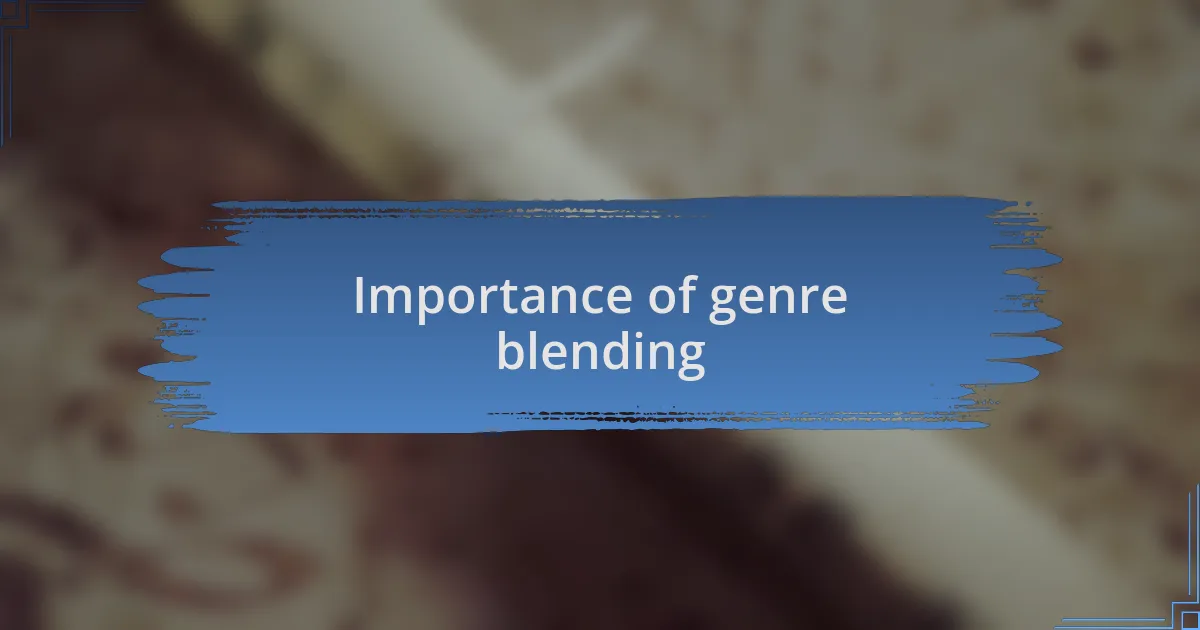
Importance of genre blending
Blending genres in music is like opening a door to endless possibilities. I recall experimenting with elements from jazz and rock in one of my songs. The result was exhilarating; it felt fresh and unexpected. It made me realize how genre blending not only invigorates the creative process but also attracts a wider audience. Have you ever found yourself drawn to an artist because of their unique sound? Often, it’s their genre-blending approach that sets them apart.
In my experience, genre blending fosters innovation and reinvention. When I fused electronic music with traditional folk melodies, I tapped into a sound that resonated with both modern listeners and those with a more nostalgic ear. This melding of styles creates a rich tapestry of sound that tells a story in a way that feels new yet familiar. Isn’t it fascinating how different genres can come together to create something entirely original?
Moreover, blending genres has the power to challenge the norms of the music industry. I’ve witnessed how songs that defy conventional genre labels often receive more attention and spark conversations. Artists can express their individuality more freely, allowing listeners to connect on a deeper level. This expansion of musical boundaries encourages collaboration and can lead to unexpected, beautiful outcomes. Doesn’t it make you think about the limitless potential music holds?

Innovative songwriting techniques
Innovative songwriting techniques often involve manipulating traditional structures to create something new. For instance, when I first tried writing a song with no chorus, I felt like I was breaking all the rules. Yet, it allowed the verses to flow into a narrative, almost like telling a story with each line. Have you ever listened to a song that felt like a journey? That’s the kind of experience I aimed to craft.
Collaboration is another powerful technique I’ve embraced. I remember a session where I partnered with a poet, and we combined spoken word with melody. The result was electrifying—each verse propelled the music, and the rhythm of the words added depth to the sound. It made me wonder, can the written word and music truly enhance each other? My answer is a resounding yes; blending these elements can push boundaries and create art that resonates.
I also like to experiment with different time signatures to shift the feel of a track. During one songwriting session, I tried a waltz rhythm in a pop song, which transformed the mood entirely. It’s fascinating how a simple change can evoke a different emotion and keep the listener engaged. Have you ever noticed how certain rhythms can draw you in? They can change your perception and create a unique listening experience that lingers.
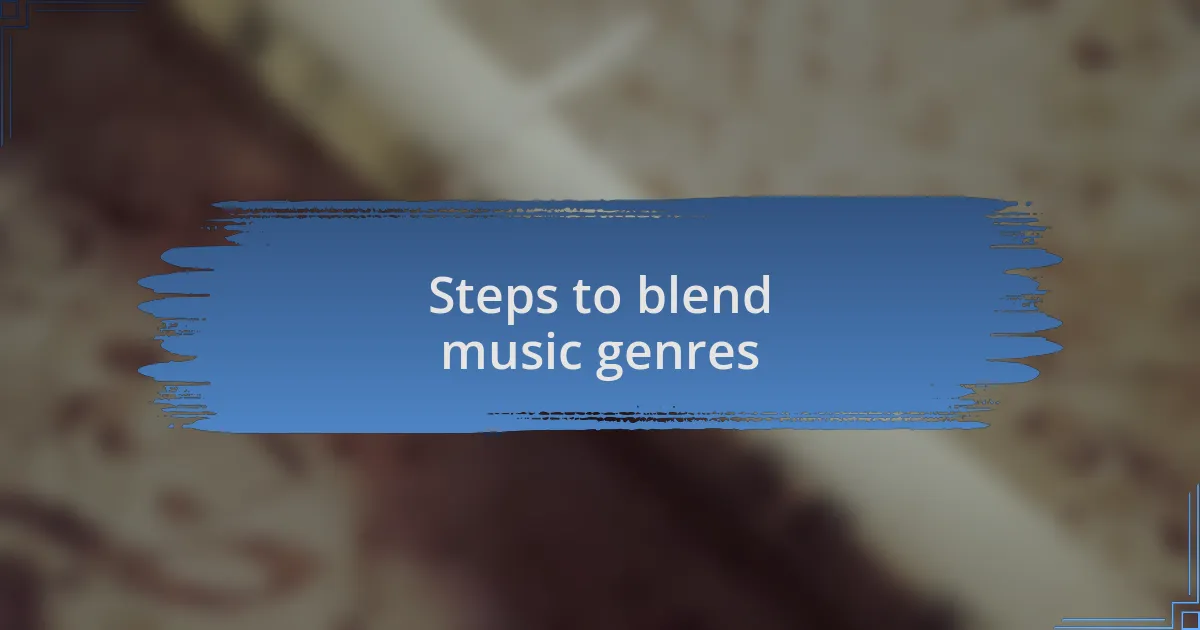
Steps to blend music genres
Blending music genres requires a methodical approach, and the first step is to immerse yourself in various styles. When I dove into reggae and rock, I found that understanding the core elements of each genre was essential. It was thrilling to dissect the rhythm of reggae and the powerful riffs of rock—each offered unique challenges and inspirations that could intertwine beautifully. Have you ever found yourself captivated by elements from different genres that seemed inherently at odds?
Next, I encourage experimenting with instrumentation. In one project, I incorporated a traditional sitar into an electronic beat, and the unexpected harmony it created was magical. This interaction between the instruments sparked a creative explosion. Picture how a simple tambourine can turn a straightforward melody into something fantastical; blending instrumentation is like adding spices to a dish, enhancing the overall flavor.
Lastly, don’t shy away from lyrical themes that resonate across genres. I once wrote a pop track with the profound storytelling elements characteristic of country music. This cross-genre approach not only captivated my audience but also helped to convey deeper emotions that many could relate to. Have you considered how the message of a song can be more impactful when it’s wrapped in a genre you don’t typically associate with it? Combining lyrical narratives from different backgrounds can push the boundaries of your creativity.
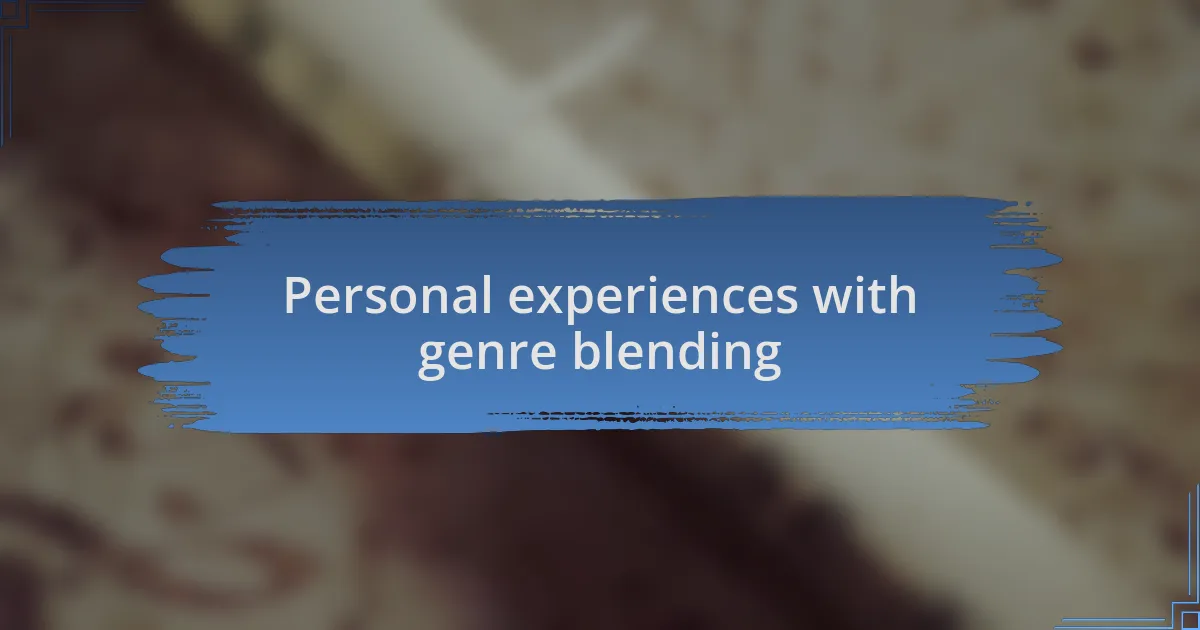
Personal experiences with genre blending
I vividly remember my first attempt at blending jazz and hip-hop. I was sitting in my tiny studio, inspired by the smooth saxophone lines I had heard all week. It felt like magic as I layered a laid-back rap over those improvisational melodies. Watching my friends’ reactions, I realized that genre blending not only showcased my creativity but also stirred emotions in listeners in ways I had never anticipated.
In another experience, when I mixed folk elements with electronic beats, I was surprised by how the acoustic guitar intertwined with synthesized sounds. The juxtaposition was fascinating, creating an entirely new feel. Every time I played that track live, I could sense the audience’s enthusiasm grow as they recognized familiar sounds presented in an unexpected light. Isn’t it incredible how exploring different genres can evoke new feelings and connect people in ways we might overlook?
Reflecting on these projects, I found that genre blending became a journey of exploration and vulnerability. Each time I stepped out of my comfort zone, whether through unusual collaborations or innovative sounds, I discovered new aspects of my musical identity. Have you ever taken that leap into the unknown, using music as your guide? It’s a rewarding adventure that can reshape your creative perspective.
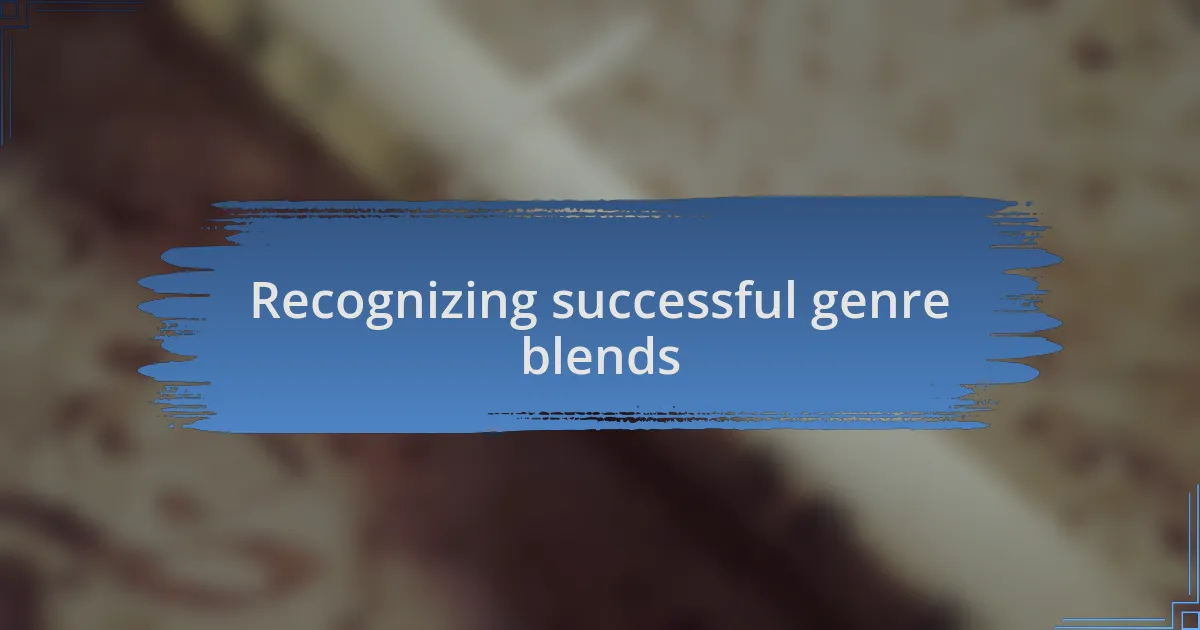
Recognizing successful genre blends
Recognizing successful genre blends often involves understanding how they resonate with audiences. I recall the first time I heard a country-rap fusion track; it was a revelation. It bridged two worlds, capturing the spirit of storytelling from country while infusing the raw energy of rap. That’s when I realized: if done right, genre blending can break down barriers and connect listeners across different musical backgrounds.
There’s something captivating about a song that seamlessly weaves pop hooks with the rawness of rock. I remember dancing at a festival, feeling exhilarated as I heard a band effortlessly blend these elements. The crowd’s energy was palpable, proving to me that successful mixtures often resonate on an emotional level. It makes me wonder, how can contrasting genres come together to elevate our experiences?
I find it fascinating that, when exploring genre blends, we often stumble upon new identities for artists. Take for instance the collaborative works between indie musicians and orchestral composers. The orchestral arrangements brought a fresh depth to simple melodies, captivating audiences in profound ways. Isn’t it astonishing how blending styles can create something that not only entertains but also transforms the listener’s experience?
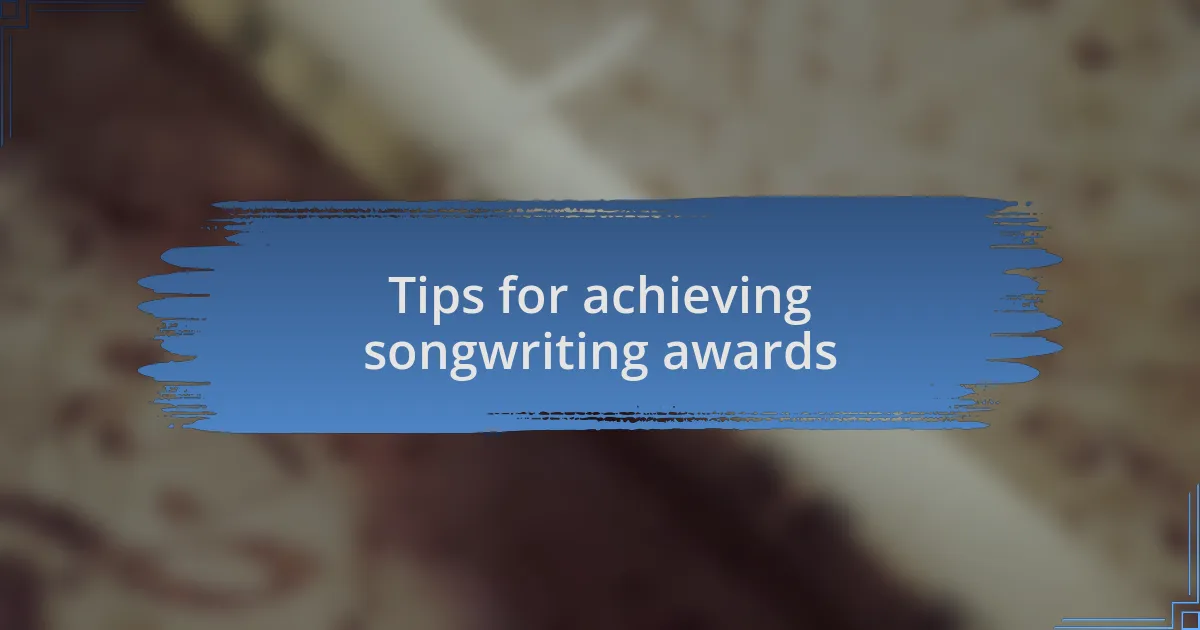
Tips for achieving songwriting awards
To achieve songwriting awards, honing your unique voice is essential. I remember the first time I poured my heart into a ballad, layering personal stories into every verse. The feedback was overwhelmingly positive, reinforcing how authenticity resonates with judges and listeners alike. Ask yourself, what experiences can you draw upon to make your lyrics more relatable and impactful?
Another valuable tip is to collaborate with other artists from different genres. One of my most rewarding experiences was working with a jazz musician. The fusion of my pop sensibilities with their improvisational flair brought new life to my songs, making them richer and more dynamic. Have you ever thought about how collaboration can expand your creative horizons and sharpen your songwriting skills?
Finally, always seek feedback from diverse audiences. I once performed a song for a mixed group of friends, and their varied reactions offered insights that shaped my work. They highlighted areas where the emotion fell flat and parts that truly connected. How can you use feedback not just to improve, but to refine your musical identity as you strive for recognition?